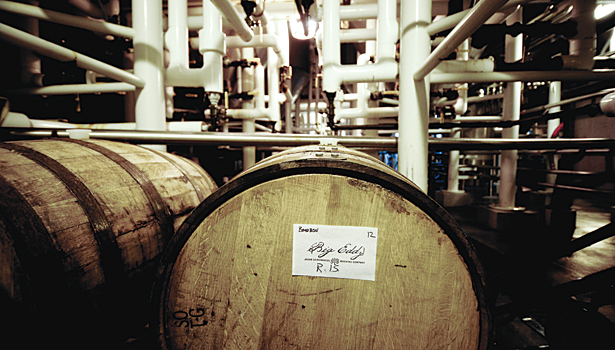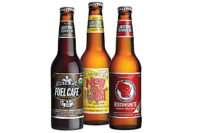Experimentation at MillerCoors’ 10th Street Brewery
Tenth and Blake Beer Co. facility runs a ‘hand-crafted’ operation

Representing the “Tenth” reference in Tenth and Blake Beer Co., the 10th Street Brewery in Milwaukee is one of the company’s smallest, most experimental breweries, says Tom Cardella, president and chief executive officer of the Chicago-based MillerCoors division of craft and import brands.
Purchased by Jacob Leinenkugel Brewing Co. in 1995, the 30,000-square-foot brewery produces between 35,000 and 90,000 barrels each year, says Greg Walter, master brewer and facility manager at the brewery. It makes Leinenkugel’s Honey Weiss, Leinenkugel’s Special Ale, Leinenkugel’s Hefeweizen, Leinenkugel’s Canoe Paddler, Big Eddy Russian Imperial Stout, Big Eddy Imperial IPA, Big Eddy Wee Heavy Scotch Ale, Big Eddy Baltic Porter and Big Eddy Über Oktoberfest beers. It also brews other Tenth and Blake brands for large-scale test markets, Walter says. Last year, the brewery produced 36 different SKUs, he adds.
The facility was built with flexibility in mind; however, after 18 years of production, it is nearing capacity. Therefore, the company is in the planning stages for an expansion on the plant that would enable the brewers to create more small-batch beers, Cardella says. It also plans to add a tunnel pasteurizer, flash pasteurizer, different labeling types and possibly a centrifuge, Walter says.
“We have plans to increase the flexibility of the brewery for other beer types,” he says.
The facility uses as many as eight different yeast strains and 130 brewing ingredients, Walter says. Last year, the team engineered modifications that help the facility keep the yeasts separate and healthy, he notes. A vent line foam trap from each unitank separates the foam-overs, and a new yeast propogation tank as well as two new yeast brinks help to reuse yeast strains, he adds.
About half of the valves in the brewery are automated; the rest are manually operated, which enables flexibility, Walter says. Additionally, the packaging process is completely manual, he says. Cases are hand-stacked and unstacked without a palletizer, he explains.
The facility currently operates one bottle line, which runs 12- and 22-ounce bottles, and one keg line, which runs half-barrels and sixth-barrels, Walter says. A typical bottle run can produce up to 55,000 bottles, he adds.
“The brewery has a nice layout and nice stainless steel tanks, but we rely on the brewers to make everything work,” Walter says. “[It’s] truly hand-crafted.”
How it’s made
Optimizing its space, the 10th Street Brewery uses a three-in-one mash/brew kettle/hot wort tank, which cooks carbon filtered water and grain and finishes the mixture off with hops, Walter explains. Once the brew is complete, the wort is cooled and transported via overhead pipes to a unitank for fermentation and aging, he says. The beer ages in the tanks for 14 to 30 days and then is pad filtered, which is the final step in the process, he adds.
Throughout the process, the beer is tested for carbon dioxide, oxygen, clarity, color and flavor, Walter says. The yeast also is tested to ensure quality and remade into next-generation yeast, he adds.
Once the beer is packaged and hand-palletized, Tenth and Blake teams up with parent company MillerCoors to coordinate distribution. For instance, when an order of Big Eddy beer is ready for shipment, it is sent to a nearby warehouse for storage. Then when a distributor orders Leinenkugel’s Honey Weiss and Big Eddy, for example, he or she can pick up both brands for distribution at the same time, Cardella explains.
“We do have a separate supply chain group that manages our smaller facilities, and at one point our strategy was [that] Tenth and Blake should own and have on the books [all of its craft breweries], but it makes no sense because you need to be able to capitalize on this grander-scaled infrastructure,” Cardella says.
“We’re still learning and evolving it, but it’s a great model and it’s much more economically efficient,” he continues. “At the end of the day, we’re not looked at to be a craft brewery. We don’t fit the definition because we’re obviously more than 25 percent owned by a big brewer, but at the end of the day, it isn’t about the structure. It’s about the heart, the soul, the culture, and ultimately it’s about the beer and what your brewers do to please consumers — pure and simple.”
Looking for a reprint of this article?
From high-res PDFs to custom plaques, order your copy today!







